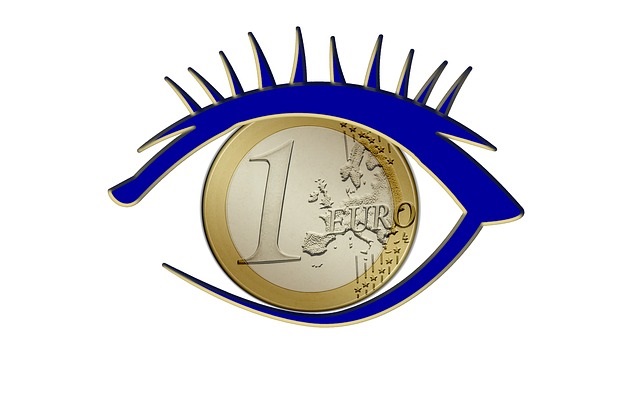
Semantics matter: Why the European Monetary Fund is a welcome idea, but a bad name

In
The willingness to complete our Economic and Monetary Union has been given much welcome impetus in recent months. One of the key ideas is to transform the existing European Stability Mechanism (ESM), which provides conditional financial assistance to eurozone countries, into what has been labelled a ‘European Monetary Fund’. Some of the proposed reforms to strengthen the ESM can indeed be of benefit for the eurozone, for example by integrating it into the EU’s institutional framework, increasing its crisis-prevention capacities or using it as a backstop for the banking union.
*****
Semantics matter: Why the European Monetary Fund is a welcome idea, but a bad name
The willingness to complete our Economic and Monetary Union has been given much welcome impetus in recent months. One of the key ideas is to transform the existing European Stability Mechanism (ESM), which provides conditional financial assistance to eurozone countries, into what has been labelled a ‘European Monetary Fund’. Some of the proposed reforms to strengthen the ESM can indeed be of benefit for the eurozone, for example by integrating it into the EU’s institutional framework, increasing its crisis-prevention capacities or using it as a backstop for the banking union.
While the idea is good, the envisaged name is up for improvement. Admittedly, the suggestion of calling it a European Monetary Fund has focused minds, given the parallels with the well-known International Monetary Fund (IMF). But when it comes to deciding on the actual name for an empowered ESM, it would be unwise to call it a European Monetary Fund. At least two fundamental objections stand in the way of such a label.
First of all, the motivation behind calling the IMF a ‘monetary fund’ does not apply to the ESM or its successor. The IMF’s name was agreed at the Bretton Woods Conference in 1944, when an international monetary system with semi-fixed exchange rates was designed. The IMF was to be a stabilising agent in this monetary system. In the words of Harry D. White, the US’s principal negotiator at the Conference, the IMF was to act as ‘a permanent institution for international monetary cooperation’.
With the collapse of the Bretton Woods system in the 1970s, the IMF’s role changed considerably. It became less involved in monetary cooperation, now largely concentrating on lending foreign currency to countries needing it. The reference to ‘monetary’ in the IMF’s name has, as a result, become somewhat outdated. It nonetheless has kept some relevance, given that central banks remain closely associated with the IMF: on the one hand, many central bank governors are member of the IMF’s highest decision-making body, and, on the other hand, a part of the Fund’s resources (referred to as quota) are held as official reserves by central banks across the world.
In contrast, there are absolutely no plans for a strengthened ESM to play a role in European monetary cooperation, nor for central banks to be involved whatsoever in its operations – quite the contrary. Instead, the reinforced ESM would focus on financial (i.e. not monetary) support to eurozone countries. So why then use the name ‘monetary fund’ for that new European body? That simply does not make much sense.
This brings us to the second fundamental objection against the European Monetary Fund label, namely the risk of a perceived overlap with the eurozone’s existing monetary authority: the European Central Bank. More specifically, there would be a highly undesirable, yet implicit, association between financing by the European Monetary Fund and European ‘monetary financing’. The latter refers to central banks offering credit facilities to governments, which is strictly forbidden in the EU in order to prevent a repeat of past episodes of excessive inflation that wreaked havoc on the economy. Creating an implicit linkage between the two would inevitably make monetary financing less controversial, something that could ultimately be highly detrimental for our Union.
It would be a mistake to see the name of a revised ESM as an irrelevant marketing issue. Nomen est omen: a name is the first and foremost tool for informing the public about the purpose of an organisation. Past European naming mistakes illustrate this point well, as the ‘European Constitution’ label proved with hindsight counterproductive for getting approval of the Treaty changes proposed in 2004. Similarly, the European Monetary Fund label risks being ill-chosen, and dangerously linked to past policy mistakes.
There are literally hundreds of names that can underline the valuable role of a strengthened ESM for the eurozone. The ‘European Stability and Assistance Fund’ could, for instance, be one of the respectable options. Yet European Monetary Fund, unfortunately, isn’t. Choosing a more suitable name for a revised ESM would allow for an improved debate on its role and functioning. This, in turn, would be beneficial for the entire eurozone reform process. Given its importance, creative officials surely can think of a better alternative.
Stijn Verhelst is an advisor at the National Bank of Belgium and a former researcher at Egmont – the Royal Institute for International Relations. The opinions expressed are strictly those of the author.
(Photo credit: Pixabay)